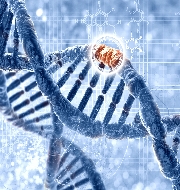NASA Scientist for first time sequences DNA in Space
The National Aeronautics and Space Administration (NASA) for the first time has successfully sequenced DNA in space aboard the International Space Station (ISS).
The genome sequencing was undertaken for the first time in microgravity as part of the Biomolecule Sequencer experiment performed by NASA astronaut Kate Rubins.
Key Facts
- The experiments were undertaken by using commercially available DNA sequencing device called MinION on samples of mouse, virus and bacteria DNA.
- The tests were set up for selected organisms whose DNA has already been completely sequenced in an attempt to make spaceflight conditions, primarily microgravity, the only variables that could account for differences in results.
- The technology demonstration experiments validated that the device is durable enough to withstand vibration during launch and can operate reliably in a microgravity environment.
- Significance: This experiment provides a way to sequence DNA in space which can help astronauts to diagnose an illness.
- Besides, it will also help them identify microbes growing in the ISS to determine whether or not they represent a health threat.
- The future explorers can potentially use the technology to identify DNA-based life forms beyond Earth.
How MinION device works?
- A positive current through pores embedded in membranes inside the device called nanopores for DNA sequencing.
- Individual DNA molecules partially block the nanopores and change the current in a way is unique to that particular DNA sequence.
- At the same time, fluid containing a DNA sample passes through the device. By looking at these changes, researchers can identify the specific DNA sequence.
For more information: DNA Sequencing
Month: Current Affairs - September, 2016


